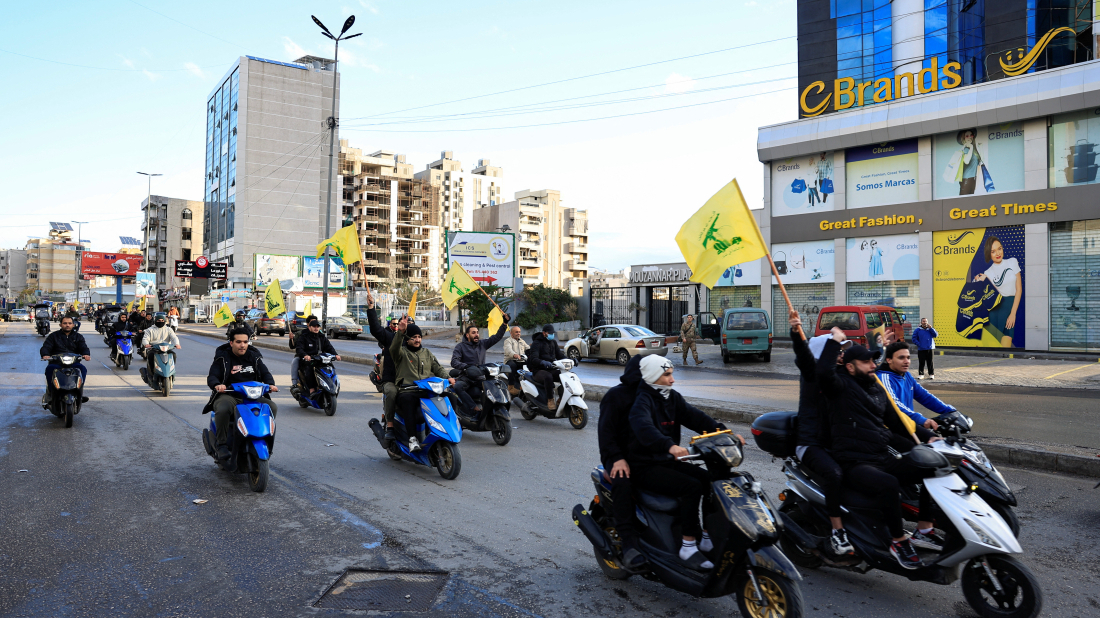Eight killed in Syria mosque explosion in Homs during Friday prayers
At least eight people were killed and 18 others injured in an explosion at the Imam Ali ibn Abi Talib mosque in the Wadi al-Dhahab neighbourhood of Ho...

The United States has proposed a comprehensive four-phase plan that calls for Hezbollah's full disarmament and the withdrawal of Israeli forces from five positions in southern Lebanon by the end of this year.
The proposal was presented by U.S. President Donald Trump's regional envoy, Tom Barrack, and is being examined by the Lebanese government.
During a cabinet meeting on Thursday, Lebanese Information Minister Paul Morcos said the government approved only the objectives of the U.S. initiative without delving into its details.
"We did not delve into the details or components of the U.S. proposal. Our discussion and decision were limited to its objectives," Morcos told reporters following the session.
The objectives include dismantling all non-state armed groups, including Hezbollah, deploying the Lebanese army to sensitive border regions, securing Israeli troop withdrawal, resolving outstanding prisoner issues through indirect talks, and permanently demarcating borders with both Israel and Syria.
Hezbollah ministers and their Shi'ite allies walked out of the cabinet meeting in protest, according to three political sources quoted by Reuters. The Iran-backed group has so far not issued an official response.
The proposal follows intense fighting between Hezbollah and Israel last year, triggered by Hezbollah’s cross-border attacks in October 2023 in support of Hamas amid the conflict in Gaza. The fighting ended with a ceasefire agreement brokered in November, which the U.S. now seeks to stabilise and extend.
A copy of the plan reviewed by Reuters outlines specific timelines:
Phase 1: Within 15 days, the Lebanese government would issue a decree committing to disarm Hezbollah by 31 December 2025. In return, Israel would suspend all military operations.
Phase 2: Lebanon must begin disarmament within 60 days, supported by a detailed Lebanese army deployment plan. Israel would initiate troop withdrawal from some positions and coordinate with the International Committee of the Red Cross (ICRC) for the release of Lebanese prisoners.
Phase 3: Within 90 days, Israel would complete its withdrawal from all five positions. Simultaneously, funding would be arranged for rubble clearance and infrastructure repair.
Phase 4: Within 120 days, Hezbollah's remaining heavy weapons, including drones and missile systems, would be dismantled. An international conference, led by the United States, France, Qatar, Saudi Arabia, and other backers, would be convened to assist Lebanon’s reconstruction and economic recovery.
The U.S. State Department has not yet commented publicly on the plan, while the Israeli prime minister’s office declined to provide a statement. The Israeli defence ministry has also not responded.
The plan warns that Israel’s continued airstrikes and ground incursions threaten to unravel the ceasefire agreement and destabilise Lebanon further.
Analysts suggest that while the proposal represents the most detailed disarmament framework yet offered, its success will depend on regional consensus and Hezbollah’s cooperation, which so far appears unlikely.
A majority of Russians expect the war in Ukraine to end in 2026, state pollster VTsIOM said on Wednesday, in a sign that the Kremlin could be testing public reaction to a possible peace settlement as diplomatic efforts to end the conflict intensify.
In 2025, Ukraine lived two parallel realities: one of diplomacy filled with staged optimism, and another shaped by a war that showed no sign of letting up.
It’s been a year since an Azerbaijan Airlines plane crashed near Aktau, Kazakhstan, killing 38 people. Relatives and loved ones mourn the victims, as authorities near the final stage of their investigation.
The White House has instructed U.S. military forces to concentrate largely on enforcing a “quarantine” on Venezuelan oil exports for at least the next two months, a U.S. official told Reuters, signalling that Washington is prioritising economic pressure over direct military action against Caracas.
Polish fighter jets on Thursday intercepted a Russian reconnaissance aircraft flying near Poland’s airspace over the Baltic Sea and escorted it away from their area of responsibility.
The move is intended to combine digital innovation and long-term infrastructure planning with further modernise urban mobility while strengthening the country’s position as a key transit hub across Eurasia.
Foreign aid and its political implications are at the centre of public debate in Georgia with mayor of Tbilisi Kakha Kaladze echoing U.S. Secretary of State Marco Rubio's stance on USAID.
Jeyhun Bayramov expressed concerns regarding the Russian Investigative Committee’s decision to close the criminal case related to the AZAL airplane crash.
Iran has rolled out a test vending of imported premium at market price in Tehran to address the country's domestic petroleum consumption deficit.
In 2025, Azerbaijan made notable strides in its foreign policy with the country's Foreign Minister Jeyhun Bayramov said on Friday.
You can download the AnewZ application from Play Store and the App Store.

What is your opinion on this topic?
Leave the first comment